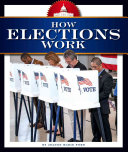2018 School Spending Survey Report
How Elections Work
9781503809024.
ea vol: 24p. (How America Works). further reading. glossary. index. maps. photos. reprods. websites. The Child’s World. Aug. 2016. lib. ed. $28.50. ebk. $28.50.
COPY ISBN
Designed to give middle-grade readers a basic understanding of American governmental operations, this series includes a broad overview (Government); information about the function of each branch; framework for our country's individual and collective freedoms (Bill of Rights and Constitution); and clarification on the electoral process (Elections). Photographs, illustrations, charts, and sidebars add interest to the choppy but informative texts. Reading list. Glos., ind. Review covers the following How America Works titles: How Elections Work, How the Government Works, How the Judicial Branch Works, The Bill of Rights, The U.S. Constitution, How the Executive Branch Works, and How the Legislative Branch Works.
ALREADY A SUBSCRIBER? LOG IN
We are currently offering this content for free. Sign up now to activate your personal profile, where you can save articles for future viewing




Be the first reader to comment.
Comment Policy:
Comment should not be empty !!!